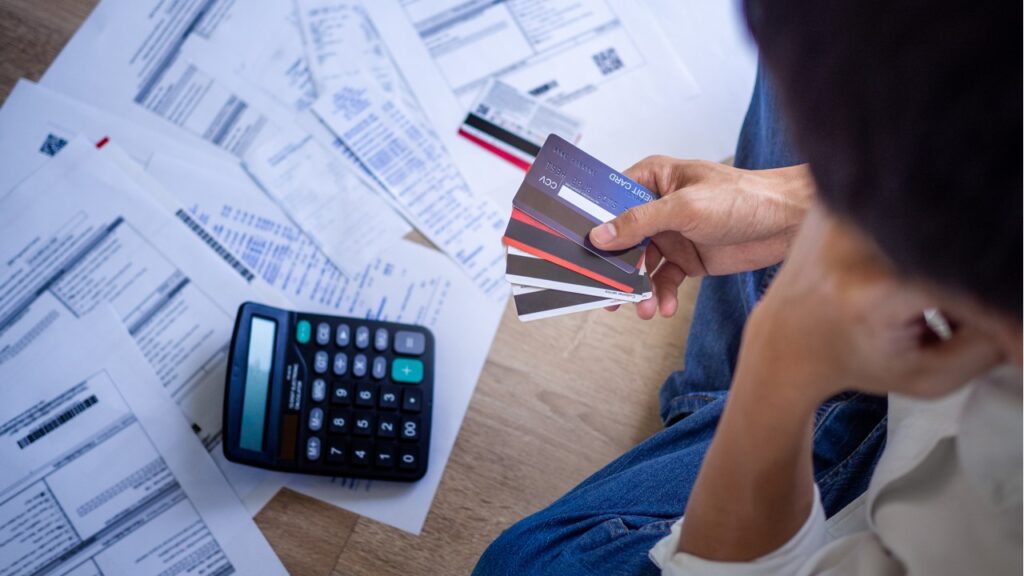Learn how to qualify for a credit card even with a poor credit score
If you’re worried your low score will hold you back, know that it’s still possible to get a card with bad credit in the UK—if you know where to look.
Credit builder cards are designed specifically for people with poor or limited credit histories. These cards offer a way to show financial responsibility and improve your score over time.

Factors That Lower Your Score
Understanding what affects your credit is essential. Learn which habits and decisions could silently harm your financial reputation and how to fix them.
Although your options may be more limited, these cards are widely available, and many don’t require perfect credit to apply. You’ll just need to prove stability and income.
Knowing how to get a card with bad credit can open the door to better financial tools, higher credit limits, and stronger borrowing power down the road.
Why Bad Credit Affects Card Applications
Lenders see your credit score as a risk indicator. If you’ve missed payments, defaulted, or applied for credit too often, your score may be too low for mainstream cards.
When reviewing your application, card issuers consider both your current score and your history. Missed payments or high utilisation may cause automatic rejections for premium products.
Fortunately, not all cards require a high score. Some products are built for rebuilding trust with lenders, even if your record has issues from the past.
If you’re looking to get a card with bad credit, these tailored options give you a way back in—if you meet basic eligibility and use the card responsibly.
How to Get a Card With Bad Credit (Step by Step)
Getting approved for a card isn’t about luck—it’s about showing lenders you’re ready for credit again. Follow this step-by-step plan to increase your approval chances.
Each step builds on the last. Taken together, they form a strategy not just for approval, but for making the most out of your credit card after you get it.
1. Check Your Credit Score First
Before applying, use a free tool like Credit Karma, ClearScore, or Experian to review your score. Knowing where you stand helps you choose the right product for your profile.
You’ll also spot potential issues like defaults or missed payments. These don’t stop you from trying to get a card with bad credit, but they shape your options.
2. Use an Eligibility Checker
Many card issuers offer tools that let you check your likelihood of approval using a soft search. This avoids hard inquiries that could lower your score further.
Compare several cards using these tools. Look for high match scores or cards specifically labelled for poor credit—these give you the best shot at success.
3. Choose the Right Card Type
Not all credit cards are equal. Look for “credit builder” or “bad credit” cards with low limits and fewer perks, but more flexible approval criteria.
These cards usually have higher interest rates, but if managed well, they’re an effective way to get a card with bad credit and start rebuilding your history.
4. Prepare Your Application Details
Have your address history, income details, and employment information ready. Inaccuracies can trigger rejections or manual reviews—something you want to avoid with a lower score.
Keep things consistent with what’s on your credit report. Mismatched data can delay processing or cause unnecessary red flags during credit review stages.
5. Avoid Multiple Applications
Every rejected application places a hard search on your file. Too many in a short period make you appear desperate, which may lead to further rejections.
Apply for one card at a time. Wait for the outcome before trying again. If you fail, take time to improve your score before the next attempt.
6. Provide Stability Signals
Lenders look for stability in income and residence. Being on the electoral roll, having a regular salary, and a consistent address all help you get a card with bad credit.
These details show lenders that you’re not a high-risk borrower—even if your credit score isn’t perfect. Include as much verified information as possible.
7. Use the Card Wisely After Approval
Once you’re approved, use the card for small purchases and always repay on time. This shows responsibility and builds a new pattern of trust with credit agencies.
Over time, responsible use leads to better offers, higher limits, and improved credit scores. That’s the long-term benefit of knowing how to get a card with bad credit properly.
What to Expect From a Credit Builder Card
While these cards are more accessible, they come with unique characteristics. Understanding what to expect helps you avoid surprises and use the card to your advantage.
Let’s break down what you typically get with a credit builder card, especially when your score is low and your access to mainstream products is limited.
Lower Credit Limits
Most cards for bad credit start with small limits—often between £200 and £1,200. This protects both you and the lender while you prove your creditworthiness.
Limits can grow over time if you make payments on time. Starting small is not a setback—it’s a key step toward rebuilding trust in the credit system.
Higher APRs
Interest rates tend to be higher—often 29% or more. But this doesn’t matter if you pay off the full balance monthly, which should always be your goal.
You’re not using this card to borrow long-term. It’s a tool for credit repair. Understanding this makes it easier to get a card with bad credit and succeed with it.
Fewer Perks
These cards usually lack cashback, points, or travel rewards. They’re built for rebuilding, not luxury. Focus on credit growth first—perks can come later with better credit.
That said, some cards offer free score tracking or automatic credit limit reviews. Take advantage of those features as you continue your recovery journey.
Tips for Long-Term Success With Your New Card
Getting approved is only the beginning. What you do next determines how fast your score improves—and whether you qualify for better products down the line.
Use these strategies to get the most from your credit builder card and ensure your score continues to rise steadily, month after month.
Keep Utilisation Low
Use less than 30% of your limit to show restraint. For example, if your limit is £500, try to stay under £150. This improves your credit utilisation ratio.
This ratio is one of the biggest scoring factors. By keeping your balance low, you prove you’re not reliant on credit, making it easier to get a card with bad credit in the future.
Pay Early and Often
Don’t wait until the due date. Paying early helps reduce the reported balance, which benefits your score. You can even make multiple payments each month for better results.
This habit also builds discipline. Early payments protect your record from late fees or interest—and keep your credit report looking its best every month.
Set Alerts or Automation
Use banking apps or calendars to set reminders. Better yet, enable automatic payments for at least the minimum amount. This prevents mistakes and helps protect your score.
Staying consistent over time is what leads to big changes. It’s not about perfection—it’s about small, positive habits repeated again and again.
Also Read: Check Your Score for Free
Before applying for credit or reviewing offers, it’s smart to check your score. This helps you understand where you stand and what options make the most sense for you.
Our article Check Your Score for Free shows you how to access your report without paying and interpret the results with confidence using trusted UK platforms.
If you’re trying to get a card with bad credit, knowing your score is the first step. It guides your decisions and helps you avoid costly mistakes.
We recommend reading it now to strengthen your financial awareness and take full control of your credit-building journey.

Check Your Score for Free
Knowing your credit profile is the first step to improving it. Learn how to monitor your score easily and safely.

